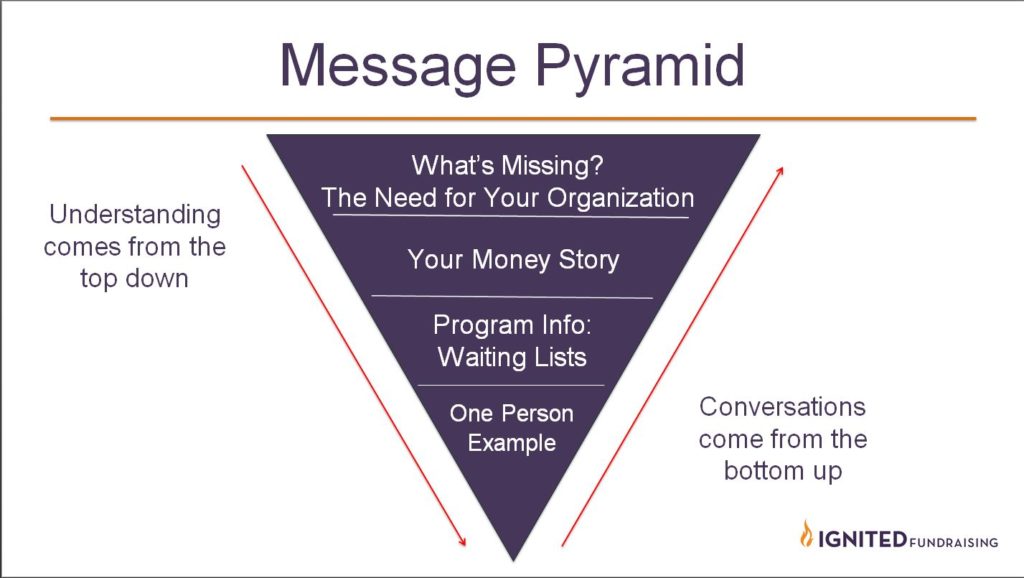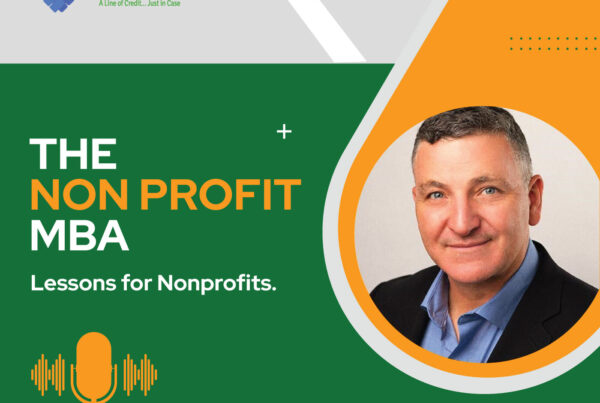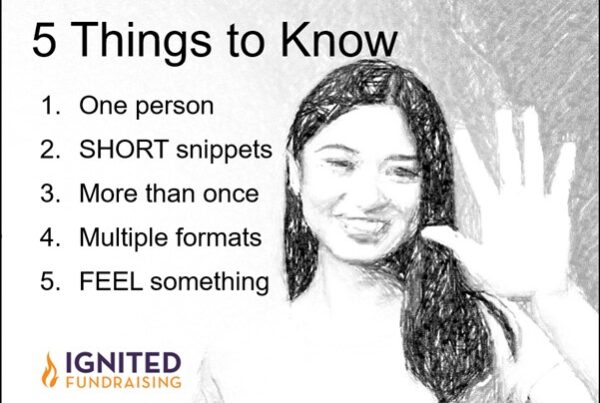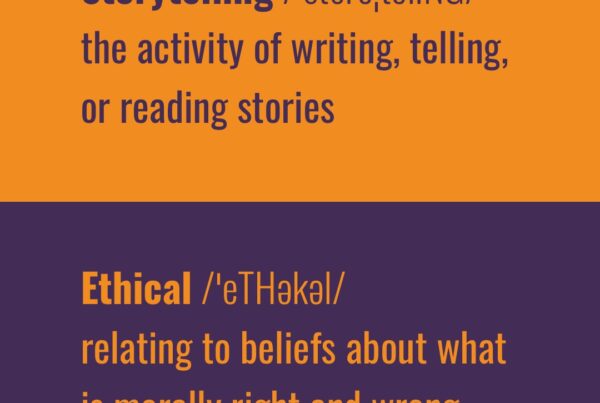4 Things to Talk About If You Don’t Want to Ask for Money

No matter if it’s someone from an all-volunteer run organization or a nonprofit with fundraising staff, I inevitably hear this comment from someone: “I don’t want to ask people for money. It makes me uncomfortable.”
My reply is: Then don’t.
However, then you must be EXCELLENT at communicating WHY people should take action. You want to be EXCELLENT at making people feel compelled to support your work.
In my experience working with thousands of nonprofit staff or board members, it is absolutely possible to raise lots of money without making yourself or others uncomfortable.
I’ve watched men and women; old and young; shy and bold; learn the power of leading a conversation with a quick, powerful example of their WHY.
FIRST: What is your WHY? It’s a short, powerful example of someone whose life is different because of your work. What I call a mission moment.
If you’re not certain what I mean by your WHY, it’s time to watch or re-watch the powerful Simon Sinek video about What, How, Why.
SECOND: Don’t just share a bunch of facts. Your conversations must also convey what is missing in the community that makes it necessary for your programs to exist.
THIRD: Share a very short factual update about what I call your “money story” – what it actually takes to help someone. Don’t just tell me how much you need to raise.
Your supporters frankly don’t care what YOU need.
FOURTH: Your supporters care about what it takes to help one child, veteran, frail elderly person, or one mother or father. They care about someone learning to walk again, or cleaning up that river, or training a service dog to help a veteran, or whatever your important mission is.
Use this message pyramid as you refine how to talk with others about your work:
 As you decide what to say when talking to others, it’s important to understand the answers to these three questions:
As you decide what to say when talking to others, it’s important to understand the answers to these three questions:
1. What is missing in the community that makes our work necessary?
2. What is our money story? Example: What does it take to actually serve one person? Not what is your budget.
3. What, if any, waiting lists, new equipment, new staff, or new programs are missing right now?
Then, share a quick story, an example of someone real and incorporate those three answers into the story you share. This powerful shift in your communication is what will make your organization stand out among all the other nonprofits asking for money.
For example:
Often angry, sometimes mean, sixteen year-old Jesse slowly learned to trust his own judgement and make smart choices even without a father figure in his life. Jesse’s after-school mentor is an adult male who grew up in the same neighborhood. Lennon, a 22-year-old college graduate, was determined to be someone a troubled teenager could learn from and trust.
When he was asked what was in store in his future, Jesse said: “I wanna be a cool dude like Lennon! I feel smarter when I hang with him. Someday I’m gonna be a good dad with a good job. And, I don’t know why, but I’m not so mad at everybody anymore.”
Life-changing work with an incredible return on investment can happen with just $575. That’s what it takes to train a mentor to support teens who are our future.
Before our mentoring program 1 in 3 young men in Jesse’s neighborhood would end up in “the system.” Now it’s 1 in 20. Until it’s zero, we’ve got more work to do.
The passion and clarity of your communication – without asking for a gift, will truly make a difference in how much you raise this year.
I promise.
_________
If you’d like to talk with me about how to use this message pyramid or make your fall fundraising communication clear & bold you can schedule a free strategy session with me.
I look forward to talking with you.






